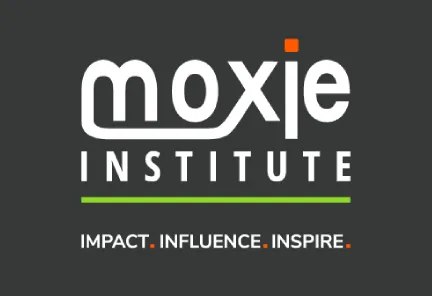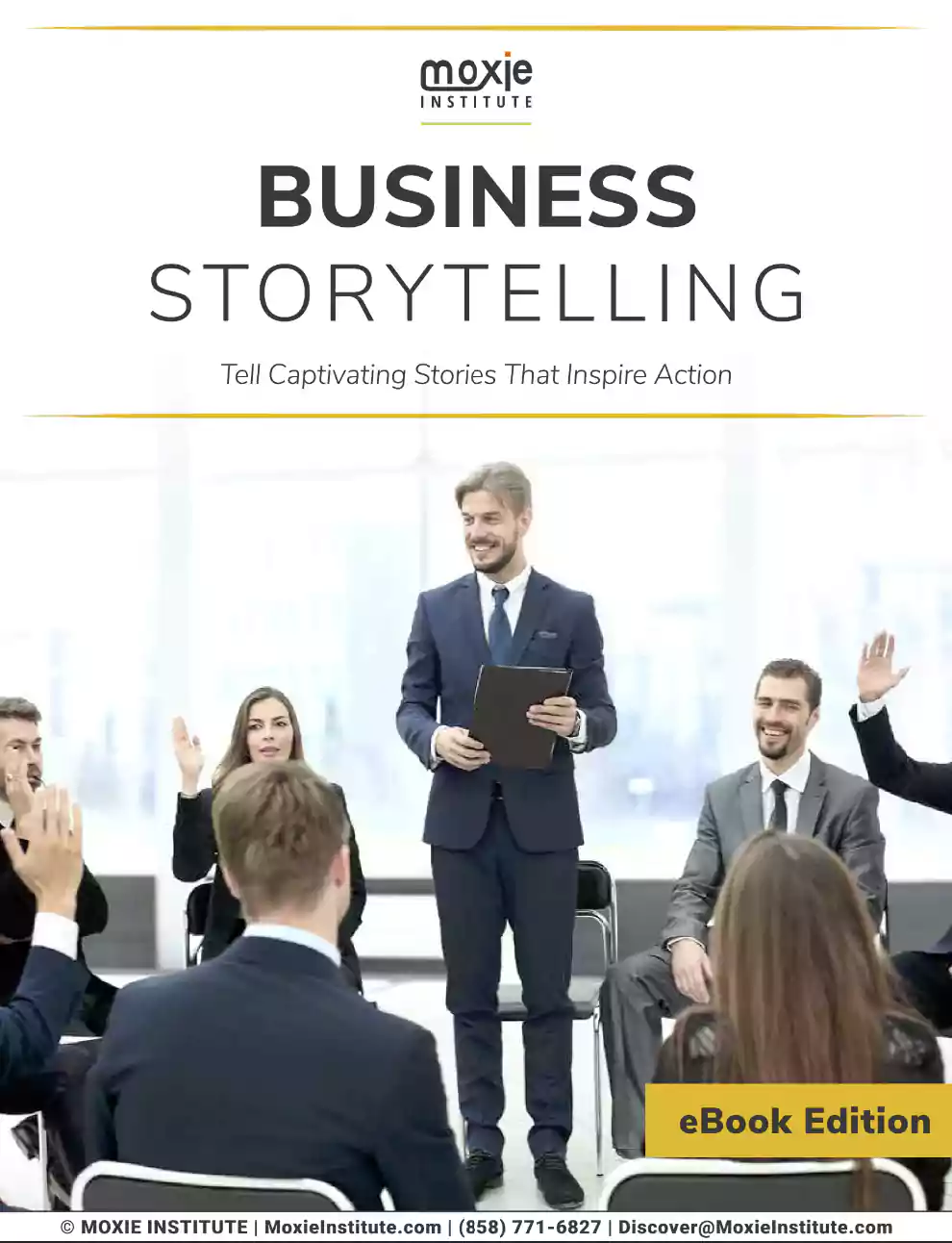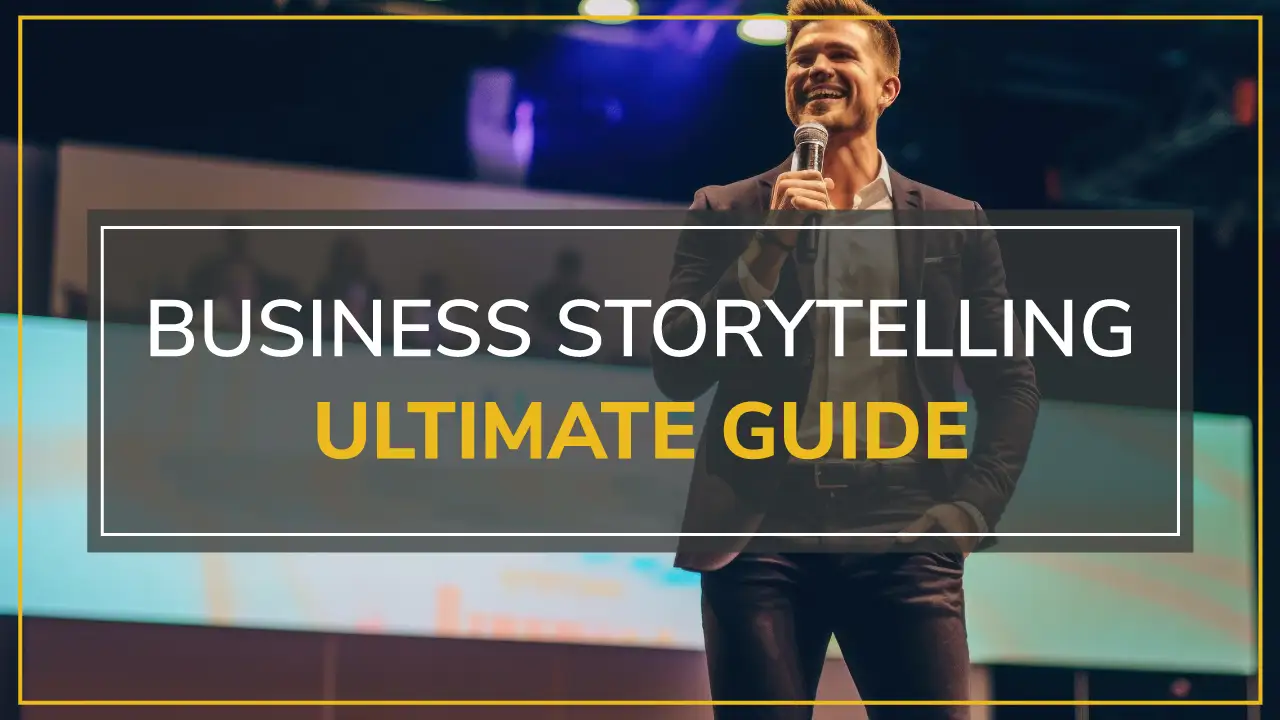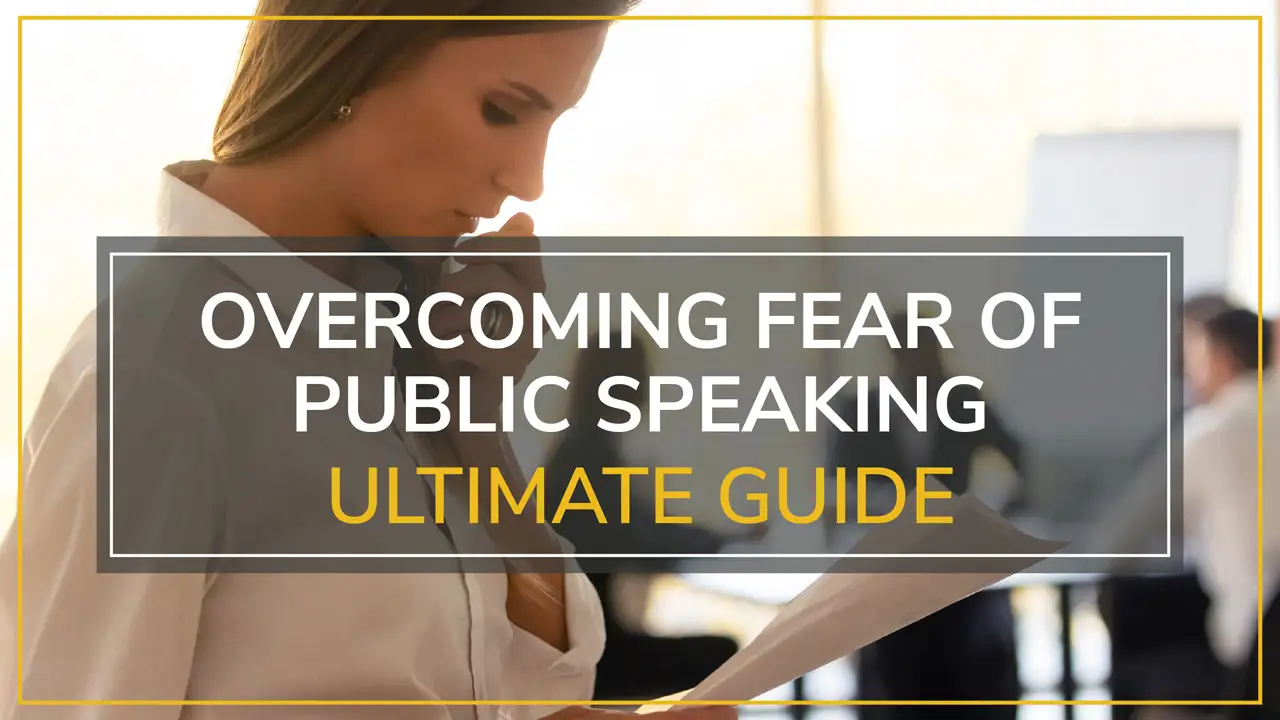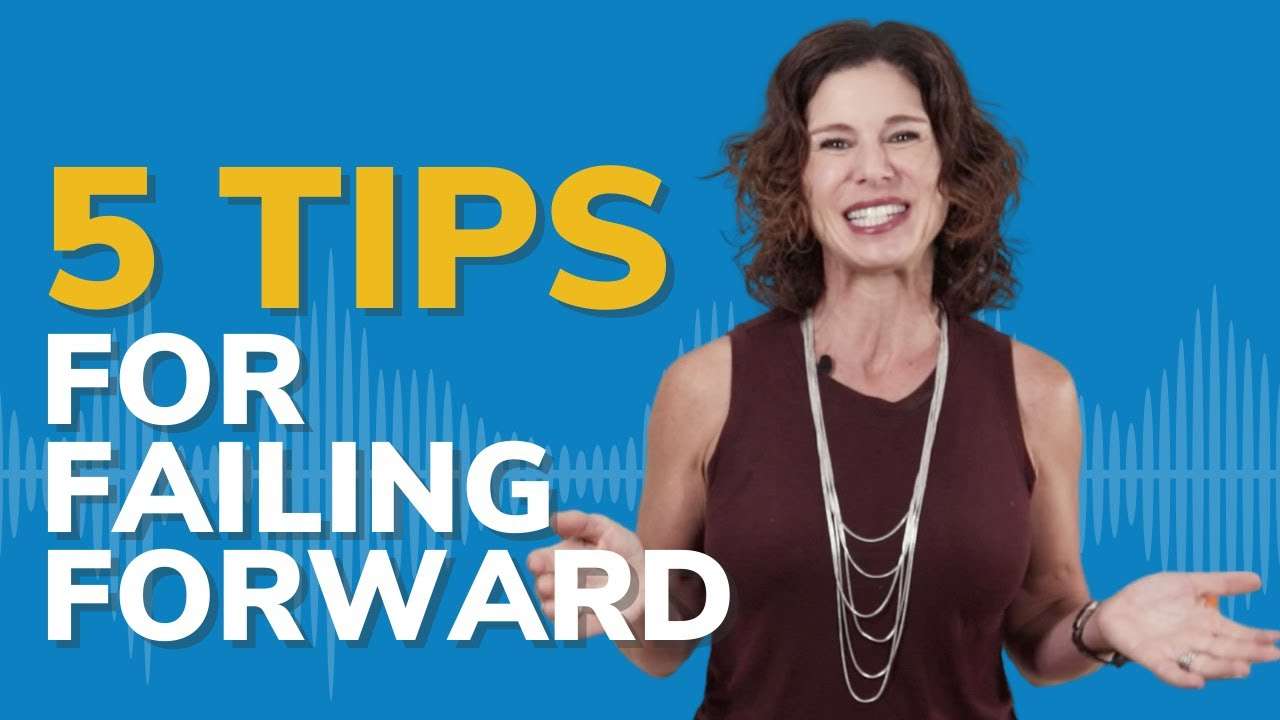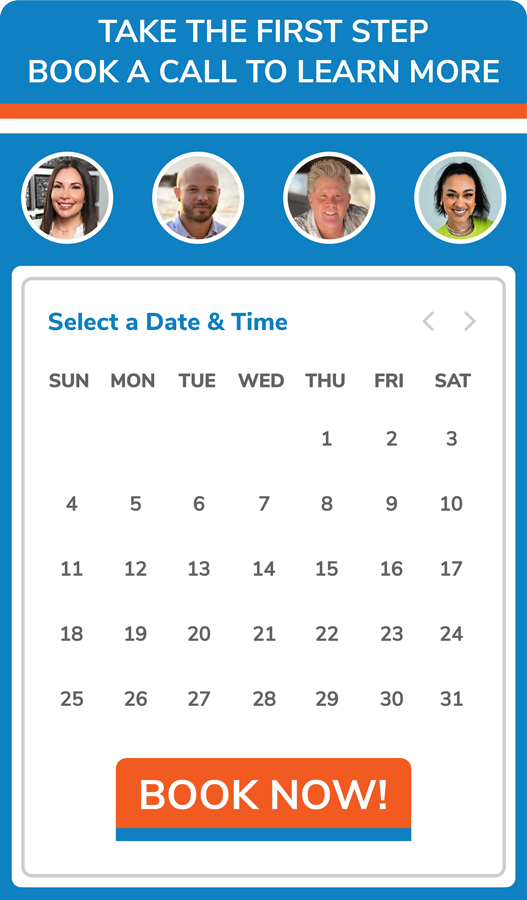"Stories may not actually breathe, but they can animate…Stories work with people, for people, and always stories work on people, affecting what people are able to see as real, as possible, and as worth doing or best avoided. What is it about stories–what are their particularities–that enables them to work as they do? More than mere curiosity is at stake in this question, because human life depends on the stories we tell: the sense of self that those stories impart, the relationships constructed around shared stories, and the sense of purpose that stories both propose and foreclose.”
Have you ever heard of the Significant Object experiment?
Two scientists asked themselves the following question: does telling a story truly make a difference when making a sale?
Seeking their answer, they bought 200 items off of eBay for $129. Afterwards, they contacted 200 writers and asked them to compose a short story for their chosen object. Once finished, they re-uploaded these items to eBay with their short stories and waited.
Although they may have only invested $129 into this project, their return-on-investment was simply off-the-charts. They made almost $8,000 on objects they purchased, on average, for $1.25.
And that, friend, is the power of storytelling.
By the end of this guide, you’ll know how to tell five different kinds of stories:
- Impact Storytelling
- Visual Storytelling
- Data Storytelling
- Brand Storytelling
- Storytelling for Sales
Whew! And if that wasn’t enough, you’ll also be able to match your audience to your story, so each point will land as you intended.
For extra credit, we’ve included a few tips on memorization and practice techniques that will help you deliver your stories with impact.
Without further ado, it’s time to break down the neuroscience behind effective storytelling and start brainstorming a story all your own!
Table of Contents
ToggleWhat’s So Great About Storytelling?
Whether you’re delivering a speech to a crowd of four or 4,000, your basic goal is still the same: to be remembered.
Funnily enough, memorability is what stories do best.
Storytelling engages multiple parts of the brain, including Wernicke’s area, the amygdala, and the sections with mirror neurons.
That’s a lot of neuroscience jargon, so let’s simplify it even further.
Wernicke’s area handles language comprehension, while the amygdala has to do with decision-making, memory, and emotions. Finally, the mirror neurons induce empathy and make us mimic the storyteller’s emotions. These mirror neurons are key, as they build connection, empathy, and emotional investment.
Since multiple sectors are engaged, the hippocampus—the treasure trove of short-term memories—is far more likely to turn the story into a long-term memory.
And isn’t that one of the main goals of every speaker, presenter, and storyteller? Transitioning their tale and it’s message from short-term memory into long-term?
Aside from being one of the greatest and simplest joys in life, storytelling acts essentially as a stimulant for the brain—completely drug-free.
That’s right: stories can release three powerful, memory-creating hormones in our brains: dopamine, oxytocin, and endorphins.
The Three Powerhouses
Dopamine, when released, increases our focus and motivation, while acting as an energy boost for the brain.
This is most easily achieved through suspense: cliffhangers, “will they, won’t they” plots, and anticipation.
Oxytocin, on the other hand, helps bond the audience to the speaker, increasing their feelings of generosity and trust.
This is best triggered by stories that cause empathy or being vulnerable with your audience.
Last but not least, we have endorphins, which make us feel relaxed, creative, and focused. How do you release endorphins in your audiences’ brains?
Get them laughing!
But before we experiment with stories and hormones, we first must learn to appeal to our audience.
The Vital First Step: Audience Analysis
If you have a story that doesn’t match your audience, then it’s not going to land as well as it could have or at all.
For example, let’s say you have a funny and insightful story about how you used sales techniques to outsmart a customer service representative. You weave the techniques throughout the story giving them context and showing how effective they are. The story ends with a reveal that you knew the direct dial of the person you were trying to reach but wanted to practice your sales techniques in a challenging situation. This would be a great story to tell to your company’s sales team! Now imagine how well it would be received if you told it to your company’s customer service team…
So, before practicing the art of storytelling, ask yourself the following questions:
- Who’s listening to you right now?
- What do they care about?
- What keeps them up at night?
- Do they have any biases?
- What might they feel strongly about?
- What are their pain points?
- What could make their lives easier?
Once you have a clear understanding of who your audience is and what matters to them, you can then start thinking about how you’ll talk to them.
We’re going to cover many different approaches to storytelling below. But the universal principles we want you to apply to every story or presentation you tell is: Feel. Know. Do. Remember.
Specifically, always ask yourself:
- How do I want my audience to FEEL?
Consider the one main emotion your story is supposed to convey. - What do I want my audience to KNOW?
What is the essential information they must learn after listening to you? Anything else should not be a priority. - What do I want my audience to DO?
Or, what’s the point of your story? What’s their call to action afterward? Don’t make them feel sad/angry/curious/excited without giving them a clear action to take. - What do I want my audience to REMEMBER?
Months, possibly even years from now, through the hustle and bustle of their lives, what details of your story do you want to still be with them?
In general, a great story shares information in an emotional way that inspires someone to act. In business, where people have busy schedules and little time, you want to make sure every story you tell feels worthwhile.
Depending on your many different audiences, you will wind up with an arsenal of stories that you can pull out at any given moment for any listener.
What Kind of Story Should I Tell?
There are so many different stories out there, ranging from, “Here’s how our worst client became our best,” to “We tried a crazy sales technique and it led to our best quarter in years!”
Not all stories will be work-appropriate, nor will they be audience-appropriate.
Before diving into what story you need to tell, ask yourself the following questions:
- Who are you speaking to?
- What is the scenario?
While one part of this questioning is audience analysis, the other is more situation-specific.
So, if you’re giving a campaign speech and need to rally a crowd, you will want to tell an inspirational story, one full of conviction and hope.
You probably won’t want to share a story about how food poisoning taught you to be more cautious.
When giving presentations, there are five main categories of stories:
1. Story Of Me
This will follow you along a personal journey, potentially overcoming great obstacles that your audience will resonate with.
For example: “I used to freeze up speaking in front of even small groups of people. A year later, I spoke to an audience of 10,000. My first step? Learning how to stop speaking so darn quickly.”
Stories like this endear the audience to you which help them empathize and understand your point of view.
The more they understand you, the more they trust you, the more they’ll listen to what you have to say.
2. Story Of Us
The history of your company or brand, and how you managed to get where you are today.
For example: “Everyone thought that when it came to frying pans there wasn’t much left to innovate on. But all of us here; working together, reshaped the entire industry.”
Out of all the other companies out there—why yours? What makes it special? Why should people believe in what you do and support you?
A good company/brand story shouldn’t be a historical recounting of facts. It needs heart first in order to sway any minds.
3. Story Of An Idea
This could be about your mission or purpose as a company, where your convictions lie, or how an idea brought about great change.
For example: “My brother and I always hated how people would leave trash on hiking trails. We wanted to understand the psychology of the people who did this and see if we could change them. And our research led to an idea that has already dropped littering by 73% on our favorite trails.”
Ideas we think of can seem genius to us and mean absolutely nothing to others.
The difference? Your experiences and thoughts that led up to the idea are what gave you the ability to recognise its significance.
This story needs to give your listeners that same context and lead them through your emotions and logic so that they arrive at the same conclusion.
Do that, and your idea is guaranteed to hit home.
4. Story Of Others
Center the narrative around your clients and the successes they experienced after buying your product or services. This story could also feature someone who didn’t become a client and what happened to them after that.
For example: “We’ve all seen before and afters. Things like dramatic weight loss, a stylish new home remodel, and so on—but these all deal with changes you can visibly see. What our clients experience is a change far deeper and more meaningful.”
Most people like to know something has been tried and tested before taking part. They want to minimize risks and, as much as possible, ensure they have a positive outcome.
Testimonials and stories that share the experiences of others who have gone before help people feel reassured and more confident in choosing to work with you.
5. Story Of Audience
Also called, “What if.” This category asks the audience to use their imaginations as you paint them a picture of a world without their major pain points.
For example, “What if when your alarm went off in the morning, you actually got up, instead of snoozing? Imagine a morning where you woke with energy and a motivated spirit, instead of unrelenting grogginess.”
One of the great effects of “What if” stories is the immediate connection it creates between the audience and your company.
Half the battle when it comes to telling an impactful story is making sure your audience will identify with the main character and their struggle. So, making the audience the main character quickly solves all of that.
Throw in their specific pain points, and boom! You’re on the road to a beautiful story.
When considering the type of story you should tell, the answer boils down to the one that will have the greatest emotional impact to support your call to action.
And “emotional” doesn’t mean only tear-jerkers or fiery rage. It can be anything from curiosity to bewilderment.
The point is that your audience feels something meaningful.
Impact Storytelling
Stories are quick and easy ways to connect with others both in casual conversation and during high-stakes presentations.
But as mentioned above, you need to tell the right story to the right people to make an impact.
You need to be strategic.
Impact storytelling is about helping turn ideas into action.
But isn’t good storytelling all about the story itself, and the performance of the teller?
Yes, but great storytelling can only occur in the right context. Add to that a strong performance and a compelling plot, and you’ve got yourself a winner!
Before we dive into characters, let’s start with the basics: structure.
Typically, stories use the same basics as their foundation! To expand…
- Intro → Hook and Context
- Body → Plot and Main Conflict
- Conclusion → Conflict Resolution and Call to Action
This narrative structure looks like an arc, or rainbow, depending on your mood.
While this three-point structure works like a charm, that doesn’t necessarily mean you have to tell it in order.
If the situation would benefit from it, you could break up the story and tell the intro, body, and conclusion at different times throughout your presentation.
This is a great way of building suspense and audience interest, as well as continuing to rope them back in to stay engaged.
Believe it or not, people don’t need wild plots or crazy structures to remain engaged. In fact, keeping it simple is usually for the best.
Most important of all, though, is to begin with the end in mind.
This way you won’t tell a purposeless story or one that doesn’t jive well with your current audience.
So, if you begin with the end in mind and figure out what the goal of telling this story is, then you’ll be able to tell the right one for that moment.
Introduction: Hook & Context
This is your moment to set the scene, pique your audience’s interest, and draw them in.
- Some examples of what a captivating opening looks like:
I had just been laid off and in two days I was being evicted—honestly, this was one of the happiest days of my life. Here’s what happened… - How would you feel if you won a contract for your company worth ten million dollars? In my case, I was furious…
- Profits were down considerably this year, but oddly, marketing and sales drew in more clients than ever before. Not only that, but our new IT system was finally fixed and we’ve received nothing but positive feedback. So why the drop in profits? What I discovered will change almost everything that we do here…
When writing a compelling introduction, think about all of the essentials: what’s at stake for your audience? Why should they care?
One of the more challenging aspects of writing your introduction is the time limit.
On average, you have eight seconds to grab your audience’s attention, or else their concentration and focus will fade, and/or disappear into oblivion.
In order to hook your audience in and retain their attention, you could try introducing conflict, noting a significant and intriguing difference, or starting off with a joke.
Both those sentences cover all three of the essentials while still adding intrigue. They manage to give enough context that the audience members aren’t confused, but also enough mystery to keep them wanting more. And in no time at all!
Body: Plot & Main Conflict
Now that you’ve hooked your audience, it’s time to reel them in.
This is where you’ll dig into the meat and bones of your story. Weaving in the core themes of your message, you’ll guide the audience through all the twists, turns, and climactic moments.
While the body details the problem or obstacle that had to be overcome, it shouldn’t give it all away. That’s where the conclusion comes into play!
Since you won’t be covering the resolution here, consider the body section as a great place to build suspense and anticipation. Those two feelings are proven to be the key to keeping your audience engaged and riveted.
You should also consider using dialogue in your story! It can be a great way to add humor, bring the situation to life in the audience’s mind, and shorten long sections. You don’t have to put on different voices or accents. Even just a change in tone or posture is more than enough to communicate who is who.
The plot, as intriguing and wonderful as it may be, must be followed by a compelling conclusion.
Conclusion: Conflict Resolution & Call to Action
“At long last, the client got the product of their dreams and lived happily ever after…” Or not! This is your moment to tie everything together, resolve the main conflict, and, last but not least, create the bridge.
But what’s the bridge?
Only the most important part of the conclusion! This section should answer the following questions:
- Why does this story matter?
- What is the audience’s call to action?
- What are the lessons learned? Messages imparted?
All this to say, what’s the point of telling a story when the audience doesn’t know what to do with it?
Having a direct call to action will also help motivate them to do something with the story.
As for that pesky call to action, try and avoid simply saying, “And that’s why you should buy my product!”
While that certainly gets the point across, your call to action isn’t only an attempt to sell your audience something.
Instead, it is asking them to make a change in some way, shape, or form.
There are two kinds of calls to action:
- Perspective Call to Action: Explain how the audience should think or feel about the information you just presented to them.
- Action Call to Action: Tell the audience what to do with that very same information.
So, do you want your audience to reconsider the way technology functions in their lives? Do you want them to realize how much better their lives could be with your services/product?
That’s up to you to decide, and your call to action to fulfill!
Prepare For Impact
When it comes to great storytelling and great storytellers, one factor remains the same: Their stories, and their words, come from the heart.
If you believe what you’re speaking about, show it! Speak with passion, and chances are your audience will listen.
Building a tight and compelling story means combining context, action, and resolution, all while establishing a narrative flow.
That may sound like a lot, but once the bones are in place, the rest tends to build upon itself.
Of course, the art of writing and delivering persuasive, emotion-tugging stories takes time and practice to master—especially on your own.
That’s why Moxie offers speech writing as well as business storytelling and TED Talk-Style workshops or private coaching that can help take your story to the next level.
Visual Storytelling
To be clear, the very first stories ever recorded are visuals.
From cave paintings to handprints, there is evidence of visual storytelling dating back to 36,000 years ago. Beginning in the Chauvet cave in France and traveling forward in time to ancient Egypt in 3,000 B.C.E. where hieroglyphics prevailed.
In fact, written storytelling wasn’t recorded until 700 B.C.E. thanks to a little-known poet called Homer.
Visuals came first because they relay information faster and better. They provide a wealth of context that also helps give words more weight and impact.
Who here has bought furniture from big chains like IKEA or Target recently? After you pop open the packaging and lay out all the screws in front of you, you’ll see that the instructions are almost entirely visuals.
Even with texting, how many of us have sent an emoji or GIF to show how we’re feeling or thinking without saying a single word?
Visuals have always been used to aid stories.
Where words fail us or concepts are too cumbersome to explain, using visuals makes a significant difference.
The real question is how we can use them to accentuate our presentations to tell stories that have an impact?
The Facts: Why Storytelling Is So Effective
Now that we’ve established the eternal relevancy of visuals, let’s break down their long-lasting, supernatural powers through the magic of neuroscience!
Our brains are hardwired to read and understand visuals. In fact, we can fully process a visual faster than you can say “No, we can’t.”
All it takes is 13 milliseconds for the human brain to understand what it’s seeing.
And those 13 milliseconds are more than just a fun fact, they also communicate how vital visuals are for attention-grabbing.
If the human brain nowadays only has eight seconds before its concentration lacks, then spending 13 milliseconds on a visual is practically negligible!
Visuals are one of the quickest ways to snare your audience’s attention and keep them hooked for the long haul. So quick that all it takes is a glance.
Plus, visuals are known to improve learning and memorability—which presenter doesn’t want that?
So, not only do visuals help to catch people’s attention and help them understand, but they also make your presentation stick around long after your time on stage has run out.
Forms of Visual Storytelling
There are so many ways to include visuals in your presentation or daily business dealings. In fact, much of the information we receive nowadays is through a visual format–social media, anyone?
Some of these forms include, but are not limited to:
- Videos
- Illustrations
- Graphics
- Photos
- Charts/Graphs
The most important aspect to remember is your choice of visual should be whichever supports and elevates your message best.
The Best of Both Worlds
Visual storytelling is a delicate balance of two separate but necessary worlds: logic and emotion.
One example of this in action were the Sarah McLachlan advertisements done with the American Society for the Prevention of Cruelty to Animals (ASPCA).
As her song, “Angel,” plays in the backdrop, the video opens with photos of shelter animals, some sick or missing limbs, others staring sadly into the camera. In between shots of the cute and heart wrenching puppies, they also share statistics about animal abuse and how their work can help them.
Although these advertisements lean heavily on emotion to get their point across, the combination of the two is still very effective. Those ads are known tearjerkers, and for good reason!
With visual storytelling, you can also add more logic, say, to an emotional story.
Using graphs, charts, and spreadsheets all in a beautiful and easy-to-digest format will guide your audience in the right direction.
Like above, showing a picture of an abused animal and a chart showing the steep rise in reported cases makes the viewer imagine thousands of similarly distraught animals.
The chart increases the magnitude and also the emotion.
We’ll go more into Data Storytelling down below, so for now, let’s focus on the pure and simple visual.
If your visuals are too logical, they won’t elicit the emotional reaction needed to produce memorability. On the other hand, if the visuals appeal only to your audience’s emotions, they may not come away having learned anything about your brand, product, or mission. Balance is key!
Structured Visual Storytelling in Presentations
PowerPoint is headed out the door.
Not actually, but the way that we’ve been designing PowerPoints and all presentations for the last few years sure is.
Crowded slides, distracting colors, and bored faces–that’s what’s headed out the door.
What people tend to forget is that any visual presentation isn’t the actual presentation; it’s the visual aid.
While those visuals can nail your points home and further engage your audience, they are not the main event.
Achieving that delicate balance between too much or too little can be tricky at first.
So what counts as “too much”?
Have you ever been to barber or hairdresser with a TV in view? You could be having the most amazing, engaging conversation, but chances are, your eyes are going to be drawn time and time again to that muted TV in the background.
But why? Here’s where neuroscience comes in.
There are four major draw-ins for our eyes:
- Moving objects
- Contrast-rich objects
- Large objects
- Bright colors
So, even though your hairdresser is telling you about their latest trip to Antarctica, you can’t help but focus on the TV. It’s got moving objects, bright colors, and is probably a large flat screen. It’s just the way we’re hardwired!
So too with presentions, if your slides are too busy, complicated, or confusing, all eyes will be off you.
The good news is that by knowing this, we can help oir audience’s brains stay engaged and attentive—isn’t neuroscience fun?
Presentation Tips & Tricks
Humans are not great at multitasking. An unfortunate truth, but true nonetheless.
The redundancy effect shines light on our less-than-stellar abilities:
If the presenter is repeating the same information listed on the slides, anyone with an average brain is actually less likely to remember it. That formula winds up being: 1 + 1 = 0.
I.e. If you combine speaking the text with a visual of the text, the output is zero.
Luckily, we can use this to our advantage when presenting by creating slides that people’s brains are hardwired to remember.
As we learned above, our eyes are drawn to those four items, no matter the situation. When presenting, you can use them to either your advantage or disadvantage.
What’s Large Is In Charge:
Since our eyes are attracted to large objects, make the most important information on your slide the biggest. Usually, the headlines are the biggest, but they don’t always contain the necessary information or data.
Go For The Slow Reveal:
Another tip is to employ our contrast-seeking brains! If you have a long list on a slide, chances are, it’s too much for one brain to process. So, why not use transition tools/animations to highlight one item on the list, while muting/hiding all the rest?
Highlighting one, then highlighting the next while the rest remain muted enables your audience to fully absorb and process one thing at a time.
It’s Your Time To Shine—Not Your Slides
Speaking of contrast, those white backgrounds everyone knows and loves? They are big, bright, and high in contrast, which means they will zap your audience’s attention. Using a darker background with low contrast puts the attention back on you, which is where it’s meant to be.
Keep Information Limited Per Slide
TED tells their speakers that slides should have no more than 6 words on them and for good reason.
You want to reduce the distractions, break up the information.
If you were going to show 4 facts on a screen, show 4 separate slides instead
It takes the same amount of time but makes each point stand out. At the end of the day, it’s better to have a lot of sparse slides than a few busy, cluttered slides.
Ultimately, the idea is to keep slides simple and minimal. They are merely highlights and additions to your incredible presenting skills.
Visualize Those Visuals!
Now is the time to usher in a new era of slides, ones filled with clear and digestible information, instead of lists upon lists of things no one will be able to remember.
This is your mission, should you choose to accept it. Or reject it and bore people—your choice.
In all seriousness, using properly created and curated visuals in your presentations will further engage your audience and make you all the more credible.
By combining your storytelling skills with audience analysis, visualization strategies, and narrative flow, you are sure to make an unforgettable impact.
Data Storytelling
Do jumbled, cluttered graphs overwhelm you?
How about overly numbered and colored charts?
What about when someone presents an overwhelming set of data and then doesn’t connect it to the bigger picture?
That’s when you and everybody else officially tunes out and begins to daydream.
There’s a simple solution to this predicament: discover the story within the data.
Has your company suddenly seen a spike in consumers ages 60-70? Why? What if there’s been a decline in clients ages 17-25? Why is that?
Clearly, there’s a story there, and it’s up to you to tell it.
Just like all other forms of storytelling, you’re using data to create a narrative that will help persuade (or simply inform) your target audience.
The beauty of storytelling with data is that it offers evidence.
Unlike other forms, you’re not just telling an emotional story to forge a connection. You’re appealing to those uber-logical thinkers, saying, “Hey, here’s our deal, why we’re good at what we do, and here’s the data to back that up.”
Hard to deny that!
Why You Should Care
“The ability to take data–to be able to understand it, to process it, to extract value from it, to visualize it, to communicate it–that’s going to be a hugely important skill in the next decades.” Google’s Chief Economist Dr. Hal R. Varian, 2009
And he was so right!
The ability to take raw data and turn it into something not just memorable, but engaging, is a hard-earned skill. In some ways, storytelling with data is not necessarily creating a story, so much as translating it.
Think about it this way: you’re transforming insight into value. All data storytellers do is give those numbers a voice. Easier said than done, right?
Step-by-Step: From Data To Narrative
Here, we’ll break down data storytelling from the very beginning all the way down to the very end.
Before we begin, remember that the data tells the story all by itself. It’s up to you to see that story and then present it in a digestible and engaging way.
1. Gather
As you might imagine, this step is fairly simple! You just need to gather all your data and then take a seat.
2. Examine
Here’s where the real fun begins: it’s time to read with imagination in mind!
Sit down and read your data from top-to-bottom. Along the way, look for any changes that occur over time, minute differences that might have slipped by someone else, and generally familiarize yourself with the data.
You’ll be spending a fair amount of time with it, so feel free to get comfy and brew a cup or two of your favorite beverage!
3. Analyze
This step is crucial to forming a hypothesis and telling the data’s story.
In your analysis, think about the time, place, and setting the data exists in. Or, in other words, contextualize it.
Is that fall in sales due to a general dislike of the product, or because there was a snowstorm that prevented people from driving to the store?
By discovering the reasons behind the general trends, you’ll slowly reveal the greater story too.
4. Hypothesize
Now, you get to tell the story.
You’ve gathered, examined, and analyzed the data which leaves only one final step: giving it a voice.
Brené Brown famously wrote, “Stories are just data with a soul.” This is your moment to find the soul, the story, that’s bursting at the seams and release it into the world.
Data Storytelling: The Golden Bridge
Data storytelling is essentially taking raw data and transforming it into something the emotional parts of our brain can hold on to and turn into long-term memory. It’s the golden bridge between the logical and the emotional.
But why can’t data just be, well, data?
As we mentioned above, it all comes down to balance. When most folks look at a busy graph or chart, it means next to nothing to them. Logically, emotionally, or both.
But if you were to tell them a story about what that graph means and give them a reason to care, all of a sudden, everything makes sense.
In fact, humans need emotions to make decisions.
Renowned neuroscientist António Damásio once spoke about his patients who had suffered brain damage to their prefrontal cortex and other emotional receptors.
He spoke especially of their struggle to make decisions. When everything is logic-based, suddenly even deciding which restaurant to go to for dinner can take hours due to cost-benefit analysis.
“It is emotion that allows you to mark things as good, bad, or indifferent…and it is that kind of emotional impetus that [his patients] are lacking… We are constantly being swayed by what we do…When you are making decisions any day of your life, and of course the options you make are going to produce a good or a bad outcome or something in between, you do not only remember what the factual result is, but also what the emotional result is and that tandem of fact and associated emotion is critical.”
Combining narratives with valuable data is what brings success and memorability. In other words, emotion and logic. People will remember your speech and presentation more if you balance the two.
But How?
So glad you asked!
Balancing emotion and logic in data storytelling all comes down to the following formulas:
1. Data + Narrative = Explanation
The combination of cold, hard facts and narrative storytelling offers the story behind why those facts exist and what they mean.
2. Data + Visuals = Evidence
Visuals illustrating their data, such as graphs or charts, will further back up your claims and allow the audience to come to their own conclusions.
This is your moment to flex those data visualization skills.
3. Narrative + Visuals = Audience Engagement
Last but not least, the marriage so beautiful and harmonious that it’s caused long-term memories all over the world: narrative and visuals.
With those three formulas in use, you have the power to create change.
A change in perspective, a change in their thought process, a change in decision-making.
António Damásio once said, “Most of what we construct as wisdom over time is actually a result of cultivating that knowledge about how our emotions behaved and what we learned from them.”
Build That Bridge
If storytelling with data is the bridge between logic and emotion, that makes you the architect.
In building that bridge, use visuals and narrative storytelling to further illustrate and explain the story hidden inside all of those numbers.
“In listening to stories we tend to suspend disbelief in order to be entertained, whereas in evaluating statistics, we generally have an opposite inclination to suspend belief in order not to be beguiled.” - John Allen Paulos
So why not combine the two, both story and statistic, for a presentation so unbelievably good that your audience can’t help but follow along?
Brand Storytelling
When you hear the name Terry Crews, what do you think of?
Perhaps football, Brooklyn Nine-Nine, his many other acting credits… Or, does Old Spice come to mind?
Terry Crews has become the face of Old Spice, just as the Most Interesting Man in the World represents Dos Equis beer. These two mascots act as hilarious characters in their respective company’s brand storytelling, ones that have been viewed all around the world.
While these companies may have branded themselves this way, there are plenty of other types of stories out there to choose from.
Your brand storytelling can be just as impactful as theirs, even without the muscles of a famous actor to back them up.
The 3 Key Components
Brand storytelling is most effective when applying the following:
- Engage
- Connect
- Call to Action
This simple three-ingredient recipe will turn your brand storytelling from “meh” to “magnificent”!
Engage
A fabulous way to engage with your audience is to address their pain points.
For example, let’s say your company offers a revolutionary AI project management software.
Telling people all the features will just bore them. But talking about their pain points such as the endless demands on their time and ever-changing schedules will show you understand them.
But to get them to care about your brand, you need to connect with them.
Connect
Maybe the founder missed an important event in their child’s life because of a poorly managed work schedule. Maybe the software was originally created to save a grandparents failing business.
Whatever the reason, communicating why your brand exists and putting the spotlight on the beliefs and values of the people that work there will greatly help connect you to your audience.
Another great way to engage your audience is to get them to participate in the story. Ask questions, play games, cast them as characters in your story, whatever it takes to keep them engaged and processing what you’re presenting.
Call To Action
The final (and titular) call to action is less demanding than it sounds. Instead of a battle cry or a call to arms, think of it as persuading or compelling your audience to think, feel, or act differently than before.
While the art of persuasion may be more subtle than an obnoxious demand, it should still be clear and well-defined. After all, what’s the point of a wishy-washy call to action?
Does Brand Storytelling Really Matter?
If you’re a “TL;DR” kind of person, here’s your short answer: YES. A thousand times yes.
Often, brands and big corporations can feel impersonal, robotic, and even inhuman. Hence the need for brand storytelling, which can help humanize your brand to create empathy, increase memorability, and drive up sales.
Alongside those direct consequences of brand storytelling, yet another symptom is community building and growth.
By directly addressing and connecting with your audience, the brand’s “personal” values are revealed, thereby building customer loyalty.
As mentioned above, relating your brand’s story to your audience’s life (whether that be through pain points, circumstances, community pride, etc.) will only further engagement and loyalty.
Truthfully, the beauty behind brand and sales storytelling–the latter soon to come–is actually customer loyalty.
It’s great to sell a brand, product, or service once. It’s remarkable, game-changing, and sustainable to sell it to the same people over and over again. Those repeat customers are the ones who will stand the test of time.
Now, how can we make our brand’s stories matter? The answer bears repeating: a balance of logic and emotion.
Add data into your brand’s stories to provide evidence and statistics that back your claims. This will work especially well if you already have a creative narrative for your brand, such as an origin story, mascot, or another successful marketing campaign.
The combination of your company’s morals, goals, or values with data that proves the product is all it claims to be is a surefire path to success.
Of course, if you want to be confident you’re making the right choices to guarantee your success, there are always proven business storytelling experts who can help!
Finding a Perfect Match: Your Brand’s Next Story
With six different types of brand storytelling, there’s loads to go around. But before you go perusing this list, consider what kinds of stories your brand has to tell.
Is there a rich and luscious company history you can draw from? What inspired the birth of this brand, product, or service?
What about any lofty goals? Perhaps the brand is investing some of its profits into community spaces or literacy programs.
Maybe the best story for your brand will center around the products or services you offer. If you have a successful and relatable customer success story on hand, this is a great time to use it.
1. Audience
In some forms of storytelling, an effective tool is to make the audience the hero of the story. However, in the case of brand storytelling, the audience is not so much the hero of the story, but the reason behind it.
Let’s break that down a bit further. These stories, the brand’s marketing, should all be centered around the audience’s needs. In essence, you’re handing control over to the audience, instead of the company.
So, in this case, it could either be for the audience by:
- Entertaining them
- Educating them
- Improving their lives
This is highly effective if your brand’s products or services are also designed to entertain, educate, or improve your audience’s lives.
For example, LEGO’s “Rebuild the World” campaign provides both entertainment and inspiration through videos. Combining creativity, childlike imagination, and real-world problem-solving skills leads to A) inspiration to get creative, B) courage to try again after failure, and C) a very entertaining video!
Now, of course, aren’t all products and services designed to make people’s lives easier? Sure, but these brands (and this form of storytelling) take it one step further.
2. Mission
Your brand narrative could be mission-oriented. Such as healing the environment, helping leaders and driven professionals find their voice as Moxie does, or bringing creative solutions to common problems.
If you’re still not sure how this applies to your company, think about both your brand’s and your society’s core values. Where do they intersect? Is it a love for neighbors? Taking care of each other? Supporting and uplifting youth?
Wherever those paths may cross, that’s a great place to start for mission-oriented brand storytelling.
3. Dreamer
This category of brand storytelling most closely resembles the “What if” stories mentioned above. As a visionary brand, your marketing will primarily focus on the future: your goals, objectives, long-term pursuits, and community advancements.
The goal of visionary marketing is to convince the audience that by investing in your company, they’re also investing in their (and their community’s) future.
One of the more famous brands that uses dream-oriented storytelling in their marketing is Tesla. Tesla promises energy-efficient and sustainable cars that will help to solve the world’s climate crisis, simply by their customers purchasing them.
Alongside their forward-thinking advertisements, they also announce new projects regularly, such as the creation of SpaceX or self-driving cars. Tesla is all future, all the time.
4. History
Legacy-focused storytelling establishes credibility and points to deep connections within the community due to the company’s longevity.
Some classic examples include the simple tagline “Since 1945,” or whichever year the company was founded. By naming the year alone, the company is proving to its audience that it’s been of value for a long time and will continue to do so for years to come.
These stories could also cover how the company has evolved over time to show that they’re not stuck in the past.
5. Character-Driven or Mascot
The cereal aisle in almost every American grocery store is chock-full of cartoon mascots who have become icons for their brands: Tony the Tiger, Cap’n Crunch, and Lucky the Leprechaun spreading sugary joy in the form of breakfast marshmallows.
These characters work beautifully for cereals because they appeal to their target audience: school-aged people who need to grab a quick breakfast before running off to class.
Character-driven storytelling will humanize your company and make it all the more memorable. Throw in a catchy slogan, and you’re golden!
6. Employee
For big brands, such as Walmart or Home Depot, it’s highly effective to use employee-focused storytelling. Why? To humanize them and make it easier for their customers to connect with such monolithic companies.
Showing employees working, chatting with customers, or restocking the produce section with big smiles on their faces will appeal to both potential customers and future employees.
These stories create an image of a positive and safe workplace, one that prioritizes human connection and joy.
As a special treat for those of you who have read this far, we have two of our own videos to show that take very different approaches to our same brand origin story.
A Clear, Honest & Authentic Brand Story
Same Story—But We Had Fun With It
Keep It Simple
Now, it’s up to you to craft those stories!
The key to brand storytelling is simplicity. If you tell a story so long and rambling that you forget the plot halfway through, your audience probably has as well.
Following an established narrative arc, your brand’s story will appeal to customers, humanize the company, and, best of all, create connections.
If you’re feeling stuck, Moxie offers Business Storytelling courses designed to help build your brand while also building your confidence.
Storytelling for Sales
Many assume that simply by laying out the facts and benefits of buying your product, the audience will do just that.
However, in reality, every salesperson knows that’s not usually how it goes.
In fact, as Chip and Dan Heath explained in Make It Stick, only 5% of the audience remembers a statistic after a presentation, but 63% remember a story.
Stories are an integral part of making a sale because they can inspire, motivate, and move people to think, feel, and act. That was a lot of lists, so let’s break it down further.
Stories, when used properly, can become the building blocks for reality. Storytelling has the power to turn ideas and thoughts into reality.
To create change, people have to first use their imaginations to see that said change is even possible!
So, what does that have to do with sales?
If you share your story, someone may take your lesson to heart and create change in their life because of it. That change could be buying your product, becoming a member of your business, or living their life a little more bravely, as you may inspire them to do.
When you’re telling a story in the hopes of making a sale, you must remember that you’re asking someone (or lots of people) to make a change.
Change, while a necessary and constant part of human existence, tends to be very difficult for most people. That’s when real-life examples–proof–will come in handy.
Foundational Stories
Like all other forms of storytelling, sales draws from the classic archetypes as well as its own personal treasure chest of plots.
Since storytelling for sales is so pointed–the purpose is right there in the title–it only makes sense that there would be a few pointed structures to go along with them.
Here are four different foundations to build your sales story from the ground up.
1. Evidence-Based / Customer Satisfaction
This foundation would fall under the “story of others” category mentioned earlier. Here, you will lay out all the facts for the audience.
This could mean telling the story of what one customer’s life was like before they tried your service and after.
By offering a relatable main character with the same pain points as the audience, you can easily connect with them and humanize your brand.
Finishing it off by showing all the positive changes your product has made in the customer’s life further nails your point home: this could be you!
If you’re a relatively new brand and need to establish credibility and trust with an audience, this is a great way of doing so. These stories both build relationships while also making sales. Two-for-one!
2. Mission Story
This basic plot relates both to the “Story of us” and the “Story of an idea” categories mentioned above.
Maybe you’re in the introductory stages as a potential client is seeking a new vendor to work with. Maybe you’re at a conference networking with others.
There are many situations where telling an engaging and powerful story about your company can greatly aid future sales.
This mission story can cover your company origin, as well as the team of people behind it.
For example, what inspired you to create this product or service?
Did it arise from a need in your own life, or the lives of others?
What are the goals or achievements your company is aiming for?
What obstacles have you faced?
The major pitfall of mission stories is that people tend to leave out negatives and conflict to only focus on the good.
If you paint this picture of an idyllic company that can do no wrong and has never experienced any sort of hardship, your audience will either stop listening or stop believing a single word you’re saying.
Conflict is what brings us together. It humanizes you and your company; everyone has made mistakes, so we can automatically connect and relate to that.
Plus, hearing about someone else’s mistakes and the way they bounced back–these obstacles they’ve overcome–is inspiring.
Why? Because it inspires the same “Me too,” or “That could be me,” in your audience!
If you view your conflict in a mission story as overcoming adversity, your story is almost sure to land.
Humanizing your brand and developing an emotional attachment is a win-win!
3. Your Future With Me
This is the story of the audience! Or, more accurately, the potential future story of your audience.
This plot line takes what is currently happening in their lives to what could be happening.
This is a great moment to address their pain points and show (not just explain) how your product can fix that for them.
With this particular story, it’s absolutely necessary to research your audience beforehand. Imagine presenting a pain point to them that doesn’t actually apply!
If you’re approaching an audience full of students struggling with rising housing costs and inflation, your story will be different than one for a room of CEOs.
Once you know what their pain point is, present it to them and then ask them to imagine the solution with you. Finally, you will present the solution: you and your product.
For example, a great address could be, “What if there was a way to travel halfway around the world in one day?” or “What if you could feed your family of five in under 15 minutes?” You’ve established their pain point and opened up the possibility of there being a solution.
Here, your audience is the hero of the story, and who doesn’t love to be the hero from time to time?
Plus, asking them to imagine with you or come on this journey with you helps keep them engaged. No bored faces with this story!
4. Personal Anecdotes
Last but not least, there is the “Story of me,” which, in this case, comes to fruition in the form of relatable personal anecdotes.
This looks like your own personal experience with this problem or product.
- Have you used it?
- Did it work for you?
- Did it change you or your life for the better?
By establishing your own experience with the product or service, you’re building credibility alongside rapport.
This is a great place to flex your joking chops and make them laugh. You can be serious while keeping things light. Throw in an appropriate joke or two, tailored specifically to your audience.
Sarcasm may not be the best option, but almost everyone groans at a solid pun.
Almost universally, the best jokes to tell are those related to when you made a mistake. If you find it funny, others likely will, and who doesn’t respect someone that’s able to laugh at themselves?
Personal anecdotes work wonderfully because they also create common ground.
You are no longer just a salesperson trying to meet your commission. You are now a human who’s used this product and can tell them why!
This also humanizes your company by establishing empathy.
Forget-Me-Nots For Fantastic Sales Stories
There are a few key takeaways to keep in mind when it comes to storytelling for sales.
- Your story needs a hero.
- Keep multiple stories on hand for different audiences. This is not a one-size-fits-all situation.
- Ground your company in shared human experiences to create empathy and connection.
- Simplify! The goal is to be memorable enough that they will share your story with family and friends. Spreading the word is much easier when the story is not complicated or detail-heavy.
- Rehearse the ending, specifically the call to action. Spontaneity and liveliness are key to good storytelling, but to make it impactful, the ending must be strong.
- Don’t shy away from emotion. Emotion activates so many parts of our brain, thereby increasing empathy and memorability.
Like all other forms of storytelling, nailing down the call to action of this story is just as important as the story itself.
In sales especially, you have a clear and concise goal, which your call to action should work in conjunction with.
Keeping your stories grounded and relatable will help build connection and trust between you and your audience. Remember that blessed hormone oxytocin? That’s what you’re aiming for!
Finally, keep in mind that you’re asking your audience to make a change. That change could be as simple as buying your product, or it could be as intense as buying and using that service every day for the rest of their lives.
Change is hard! So, make sure to lean on all the good that change can (and will) produce.
Are you sold yet?
Practice: The Guaranteed Path To Storytelling Mastery
Hebb’s Law states that ‘neurons that fire together, wire together’.
In other words, every time you practice, you are building and strengthening those neural pathways in your brain. So, once those neural pathways are strong and bulky enough, all of a sudden, that terrifying presentation won’t seem so scary anymore.
At the end of the day, the tried and true is not stressful. While that may not be true in every situation, it often is here.
Let’s say you’re late to work, and your normal route is blocked off due to construction. Now, Google Maps is taking you halfway across town and you don’t recognize where you are and you’re going to be late.
That unfamiliarity only increased the stress instead of taking it away. Whereas driving home after work on your same familiar path is almost second nature.
Another important reminder when it comes to practice is that baby steps are important.
Our brains crave safety, comfort, and the known.
When we travel into unfamiliar territory, our brains automatically signal that this is scary and new. Some common reactions include procrastinating, catastrophizing, or deciding that presenting, as it turns out, is just not for you.
Why Stress Causes Your Body To Betray You
Your sympathetic nervous system initiates the classic “fight, flight, or freeze” response. This system is a nerve network designed to kick in the moment you sense danger, experience stress, or simply start physically demanding movements.
Which is great for many life-threatening and challenging situations because it drives up your heart rate, sharpens your vision, improves oxygen delivery—you know, all that stuff you need for fighting for your life or running like mad.
But that also means it sucks for presenting and other activities we think are dangerous and stressful but actually don’t threaten our survival at all.
That’s right. You’ll be a much better presenter if you just relax.
Which, obviously, is easier said than done.
To avoid a fight or flight reaction, take baby steps to avoid activating your sympathetic nervous system using techniques such as:
- Deep breathing
- Visualization
- Avoiding caffeine
- Getting sleep the night before
- Oh yeah, and the really important practice and preparation!
Ultimately, the more often you tell a story, the more you’ll intuitively start to learn:
- What parts you can leave out
- Where to place emphasis and emotion
- Which parts people enjoy most
All of this will refine and improve the story and how you tell it over time.
Your New Hype Squad: 4 Effective Rehearsal Techniques
The following rehearsal techniques will set you down the path of memorization and excellent delivery through breathing exercises and nonverbal cues.
And maybe they’ll inspire you to practice too!
Step #1: Familiarize
Get familiar with your content. This will help set your brain at ease and also allow you to further engage with your audience.
You won’t be shuffling cue cards in your hands and trying to figure out what comes next. Instead, you’ll feel confident in the pacing of your story and will connect further with your audience by making eye contact and smiling, should the tone permit.
While it’s necessary to memorize the basics of your story, that doesn’t mean you have to have every word down pat.
In fact, it’s better to memorize the basic outline of your story (the journey, the major pain points, structure) and leave the rest alone. This ensures you won’t sound robotic or repetitive on stage.
Step #2: Delivery
Once you’ve memorized the structure of your story, now it’s time to rehearse your delivery.
Learning how to tap into diaphragmatic breathing to calm your sympathetic nervous system is a complete game-changer.
On top of diffusing your stress response, deep breathing will also help prevent voice cracks, high-pitched squealing, mumbling, and more.
This is your moment to tap into your inner executive presence and let it shine through your delivery.
Take control of the area you’re talking in and move around it. Gesture with your hands, make eye contact, express yourself!
Do whatever you need to do to make yourself feel more confident and like the amazing speaker you truly are.
Step #3: Visualize Your Success
We are hardwired to remember negative experiences more than positive ones. Some scientists have even compared negative memories to Velcro, whereas positive ones are more like Teflon.
The negativity bias can influence every single decision you make, no matter how small it may seem.
By visualizing your success, standing up on that stage or boardroom with a satisfied audience, you are more likely to bring that about.
Christine Porath famously wrote that speaking aloud our thoughts, both positive and negative, carry more power than simply left alone in our heads.
If you can turn those negative thoughts into positive words, you’re giving power to positivity and embracing a positive outcome.
Step #4: External and Internal Feedback
Last but not least, it’s time to seek feedback! Ask a few trusted friends or colleagues—whose opinion you respect—to act as your audience for a rehearsal or two.
So long as you’ve asked the right people, you know they’re rooting for your success, so you can trust their feedback. They want to make your performance better, and so do you!
While their feedback is incredibly important, so is your own. This is where handy-dandy modern technology comes in clutch.
You won’t want to do this. But you do want to be amazing at telling stories. So that means doing this even if you don’t want to:
Record yourself telling this story and watch it.
Although it can be difficult to watch yourself perform at first, it’s a great tool to understand the way you present.
- Do you use filler words, like “Umm” or “You know” in the middle of phrases?
- Do you sound confident or nervous?
- Do you have a strong executive presence?
Once you’ve received both external and internal feedback, take it into consideration for your next practice session and know you’ve taken the steps needed to make your story the best it can be.
Those Hearts And Minds Are Now Yours To Win Over!
No matter what form of storytelling you plan on focusing on, remember to begin with audience analysis and end with a strong, clear call to action.
Those two elements form the perfect, sesame seed-covered buns on the burger of storytelling in business–so don’t forget them!
Finally, remember to practice and speak from the heart. So long as you deliver your story genuinely and authentically, people will listen.
We’ve had to cover numerous forms of business storytelling because the context is so essential to knowing the best approach.
If you want to truly guarantee your stories are unforgettable knock outs, then business storytelling classes, personalized coaching, and customized business storytelling training are the best ways to make that happen.
With decades of experience coaching Fortune 500 teams, TEDx speakers, and industry leaders, having a Moxie expert on your side will take you to exceptional new heights.
TAKE THE FIRST STEP TO MASTER POWERFUL NEW SKILLS
Schedule an easy 30-minute call using our using our calendar. We’re here to help!
